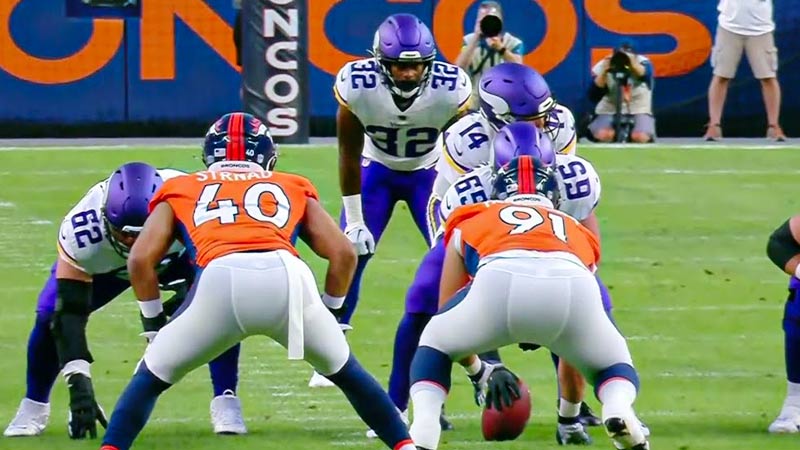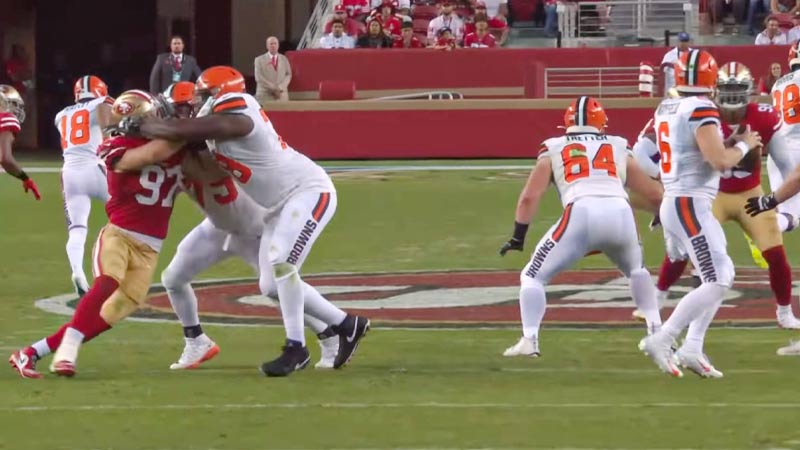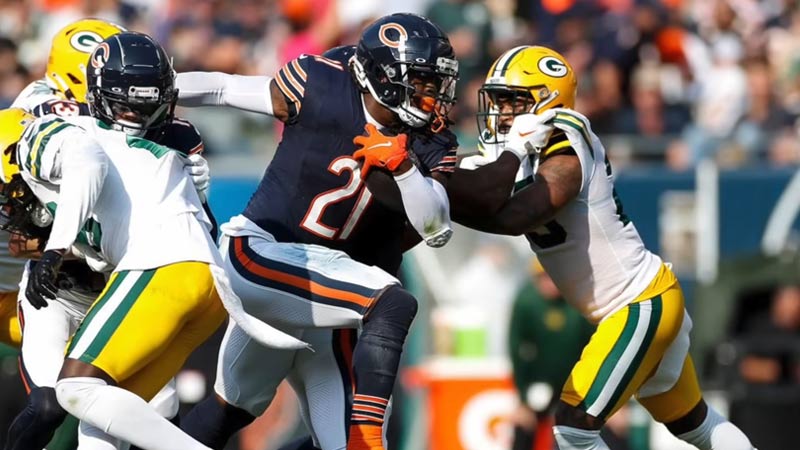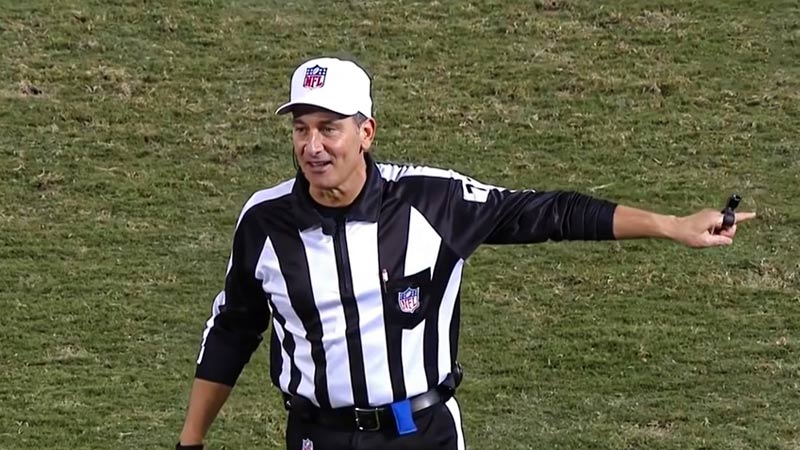In the intricate dance of football, where split-second timing and precision are paramount, the term “false start” stands as both a simple and significant rule violation.
It represents a momentary lapse, a seemingly subtle infraction, but one that can have far-reaching consequences on the outcome of a game. A false start in football occurs when an offensive player prematurely moves or flinches before the ball is snapped, disrupting the play’s timing and execution.
To understand this rule is to appreciate the sport’s intricate choreography, where every player must perform in harmony, synchronized to the rhythm of the snap count.
As we delve into the nuances of What is False Start in Football, we uncover the importance of discipline and adherence to the rules in a game where the slightest misstep can change the course of a match.
What Is A False Start In Football?
A false start in football is an infraction that occurs when an offensive player, typically one of the linemen or a player in the backfield, makes a sudden movement before the ball is snapped.
This movement includes flinching, rocking back and forth, or any action that simulates the beginning of a play. False starts are considered penalties and result in the offending team losing five yards from the line of scrimmage.
It’s a significant violation because it disrupts the timing and execution of a play, potentially putting the offense at a disadvantage. False starts are commonly caused by miscommunication, nervousness, or a desire to anticipate the snap count to gain an advantage over the defense.
To avoid false start penalties, offensive players must remain completely still until the ball is snapped, reacting only to the quarterback’s signal or the snap itself.
What Qualifies As A False Start?
Here’s some important discussion on what qualifies as a false start:
Movement Before Snap

A false start occurs when an offensive player makes any abrupt movement before the ball is snapped. This can include flinching, shifting their stance, or making any motion that appears to initiate a play.
Offensive Linemen
Offensive linemen are particularly prone to committing false starts, as they must maintain a stance at the line of scrimmage until the snap. Even a slight twitch or rocking motion can trigger a false start penalty.
Backfield Players
Players in the backfield, including running backs and wide receivers, must also remain stationary before the snap. If they start moving forward or change their stance early, it can lead to a false start infraction.
Audible Commands
Offensive players must not react to audible commands or signals from the quarterback or any other player, except for the snap itself. Responding prematurely to a signal can result in a false start.
Simulating a Snap
Deliberately simulating a snap count or snapping motion to deceive the defense is considered a false start. Players cannot engage in actions that mimic the initiation of a play before the snap.
Drawn Offsides
If a defensive player successfully entices an offensive player into a false start by moving or making it appear as if they are about to blitz or rush, it is still considered a false start on the offense.
Five-Yard Penalty
A false start incurs a penalty of five yards from the line of scrimmage. This penalty can be detrimental to the offensive team, pushing them back and potentially disrupting their drive or play-calling.
A false start is a penalty that occurs when any offensive player moves prematurely before the snap, whether due to their own actions, reacting to a signal, or being drawn offside by a defensive player’s actions.
It is an infraction aimed at maintaining the fairness and integrity of the game’s timing and execution.
What Is Considered A False Start?
A false start in football is a penalty that occurs when an offensive player engages in certain actions before the ball is snapped, disrupting the normal flow of the play. Here are some actions that are considered false starts:
Offensive Linemen’s Early Movement

Offensive linemen, particularly tackles, guards, and the center, must maintain a stance at the line of scrimmage until the snap. Even a slight twitch or rocking motion by these players is enough to trigger a false start penalty.
Any Movement Before the Snap
Any sudden or abrupt movement by an offensive player before the ball is snapped is considered a false start. This includes actions like flinching, shifting one’s stance, or making any motion that simulates the start of a play.
Backfield Players Breaking Stance
Players positioned in the backfield, such as running backs and wide receivers, are also required to remain stationary before the snap. Any movement forward or a change in their stance prior to the snap constitutes a false start.
Reacting to Audible Commands
Offensive players must not react to audible commands or signals from the quarterback or any other player, except for the snap itself. Responding prematurely to a signal, even if unintentional, is grounds for a false start.
Simulating a Snap Count
Deliberately simulating the snap count or snapping motion to deceive the defense is a violation. Players cannot engage in actions that mimic the initiation of a play before the snap.
Drawn Offsides
If a defensive player successfully lures an offensive player into a false start by moving or appearing as if they are about to blitz or rush, it is still considered a false start on the offense.
Encroaching the Neutral Zone
If an offensive player crosses the line of scrimmage or enters the neutral zone before the snap, it is a false start. This typically happens when a player is trying to gain an advantage or anticipates the snap count.
A false start incurs a penalty of five yards from the line of scrimmage and is intended to maintain fairness and consistency in the timing and execution of football plays.
False Start Rule

The false start rule in football encompasses several key regulations to maintain the integrity and fairness of the game. Here are some essential rules associated with false starts:
Offensive Movement Before the Snap
A false start is called when an offensive player makes any abrupt movement or action before the ball is snapped. This includes flinching, rocking back and forth, or any motion simulating the start of a play.
Offensive Linemen Stance
Offensive linemen, specifically tackles, guards, and the center, must remain in their stances at the line of scrimmage until the ball is snapped. Any departure from this stance, even a slight twitch, is grounds for a false start penalty.
Backfield Players’ Actions
Players positioned in the backfield, such as running backs and wide receivers, are also required to maintain a stationary position before the snap. Any movement forward or a change in their stance before the snap constitutes a false start.
Audible Commands
Offensive players are prohibited from reacting to audible commands or signals from the quarterback or other players unless it is the snap count itself. Responding prematurely to signals, whether intentional or not, results in a false start.
Simulating Snap Count
Deliberately simulating the snap count or snapping motion to deceive the defense is a violation. Offensive players cannot engage in actions that mimic the initiation of a play before the snap.
Defensive Influence
If a defensive player’s movement or actions draw an offensive player into a false start by making it seem like they are about to blitz or rush, the offense is still penalized for a false start.
Encroaching the Neutral Zone
Crossing the line of scrimmage or entering the neutral zone before the snap is considered a false start. This can occur when an offensive player attempts to gain an advantage or anticipates the snap count.
A false start penalty results in a five-yard loss from the line of scrimmage and can impact the flow and momentum of the game. These rules are in place to ensure that offensive players do not gain an unfair advantage or disrupt the timing of the play before it officially begins.
FAQs
What is a false start in football?
A false start in football refers to an infraction that occurs when an offensive player makes any abrupt movement or action before the ball is snapped. This movement can include flinching, rocking back and forth, or any motion that simulates the start of a play.
What are the consequences of a false start?
A false start incurs a penalty of five yards from the line of scrimmage. This can be detrimental to the offensive team, as it sets them back and disrupts the play’s timing and execution.
Why is the false start rule important?
The false start rule is crucial for maintaining the fairness and integrity of the game. It ensures that offensive players do not gain an unfair advantage or disrupt the timing of the play before it officially begins.
What are the common causes of false starts?
Common causes of false starts include miscommunication, nervousness, anticipation of the snap count, or attempting to gain an edge over the defense. Defensive players can also draw offensive players into false starts through deceptive actions.
How can teams avoid false starts?
Teams can avoid false starts through disciplined practice, focusing on snap count, and maintaining composure during intense game situations. Clear communication and anticipation of the snap are key elements in preventing false start penalties.
Conclusion
In the arena of football, where each yard is contested fiercely, and every play is a carefully orchestrated ballet of chaos and strategy, the false start rule remains a steadfast guardian of fairness and order.
It serves as a reminder that success on the gridiron hinges not only on physical prowess but also on discipline and timing.
A false start, seemingly an inconspicuous rule infraction, carries significant consequences. It costs a team five valuable yards, disrupts the play’s rhythm, and can ultimately alter the course of a drive or a game.
So, in the midst of the thundering collisions and electrifying plays, the false start rule serves as a testament to the meticulous precision required to excel in the sport, reaffirming that even the smallest misstep can resonate with profound implications on the outcome of a match.







